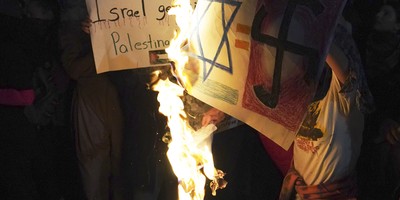During the three-day sea battle of early June 1942, a scant six months after Japan's devastating offensive strike on its fleet base at Pearl Harbor, the outnumbered USN sank four Imperial Japanese Navy aircraft carriers. Japan lost not only the carriers, but also their highly trained warship and aircraft crews, irreplaceable sailors and naval aviators with elite skills.
As the carrier hulls hit the bottom of the Pacific Ocean, Japan's strategic offensive war ended and its long, bitter defensive war began. Though the war in the Pacific would continue for another agonizing three years and two months, America had seized the strategic offensive. A pivot had occurred. After Midway, America initiated and Japan reacted.
Thirty years of planning for a sea battle of annihilation with Japanese naval forces somewhere in the central or western Pacific (War Plan Orange), to include a sophisticated fleet training regimen that began in the 1920s, prepared the U.S. Navy for Midway. Preparation, however, does not ensure combat success. Defeating the Japanese required desperate courage at the moment of action, especially by the torpedo bomber and dive bomber crews that delivered the fatal attacks on the Japanese carriers.
Defeating the Japanese also required astute and decisive crisis leadership. The steady nerves of Adm. Chester Nimitz, overall commander of U.S. Pacific forces, contributed immensely to the victory, as did his uncanny positioning to the American fleet. In the aftermath of the battle, the thoughtful Nimitz credited his intelligence officers and their staffs with stiffening his steady nerves.
Recommended
Records declassified over the last two decades have now given historians an even better understanding of the key role intelligence played in the victory, especially code-breaking.
As the spring of 1942 progressed, Station Hypo, a Navy radio intercept and code-breaking unit located at Pearl Harbor, became increasingly adept at decrypting and reading Japan's naval communications codes. USN cryptographers, however, only understood message fragments. The code was complex, and lacking digital computers, cracking it took time.
The Japanese fleet, it appeared, was targeting an area called "AF," where the much weaker USN would be forced to fight at a numerical disadvantage. Analysts believed the code "AF" signified Midway Island, but they weren't certain. Hypo's commander, USN Lt. Cmdr. Joseph J. Rochefort, devised a trick, which Nimitz approved. In mid-May 1942, the Navy broadcast a phony message: Midway Island's garrison faced a water crisis because its freshwater-producing machinery had broken down. Shortly thereafter, Japanese radio communications reported that "AF" needed water.
Nimitz concluded that the Japanese intended to take Midway. He reinforced the island. Intelligence indicated that the Japanese enjoyed a numerical advantage in warships of almost three to one. Several Japanese planes, like the Zero, were tactically superior to U.S. aircraft.
Nimitz, however, understood the IJN's intentions. He concentrated his own force of three aircraft carriers northeast of Midway and positioned them so their aircraft could help defend the island and, on order, quickly intercept and attack Japanese carrier forces the code-breakers said would strike from the northwest. Nimitz had the Japanese carriers steaming into an ambush.
The well-prepared and courageous USN executed the ambush. The U.S. lost one carrier and 307 dead. In addition to the four sunk carriers, Japan lost a cruiser and over 3,000 dead.
After Midway, the Japanese could no longer militarily win World War II. They could -- and did -- try to make the war so costly in blood and effort that American will would flag and America, despite Pearl Harbor, would accept a negotiated settlement. Despite Tarawa, Iwo Jima and Okinawa, they failed at that, as well.






















Join the conversation as a VIP Member